Rolls-Royce Cullinan revealed: exclusive pictures of luxury SUV
Just three years after the luxury brand unveiled its plans to build an SUV, it has revealed the £250,000 (Rs 2.2 crore) Cullinan.
Rolls-Royce has revealed its all-new Cullinan with intentions of overtaking the likes of the Range Rover and Bentley Bentayga to become the new king of the ultra-luxury SUV segment.
It was three years ago that CEO Torsten Muller-Otvos said that his Goodwood-based company was planning a super-luxury SUV. Now the car Rolls-Royce buyers have long been asking for is here.
The Rolls-Royce Cullinan SUV, named appropriately after the world’s largest raw diamond, found in South Africa over a century ago and now part of the Crown Jewels, costs from £250,000 (Rs 2.2 crore). Rather than being a mere high-bodied luxury car, Cullinan is a full-capability off-roader “able to do whatever a Range Rover can do”, while retaining the refinement and luxury of a limo. To stress Cullinan’s breadth of capability, the Goodwood company has artfully leaked a selection of impressive YouTube clips showing prototypes tackling rough roads and huge dunes and has coined the slogan “Effortless, everywhere” to describe its capability.
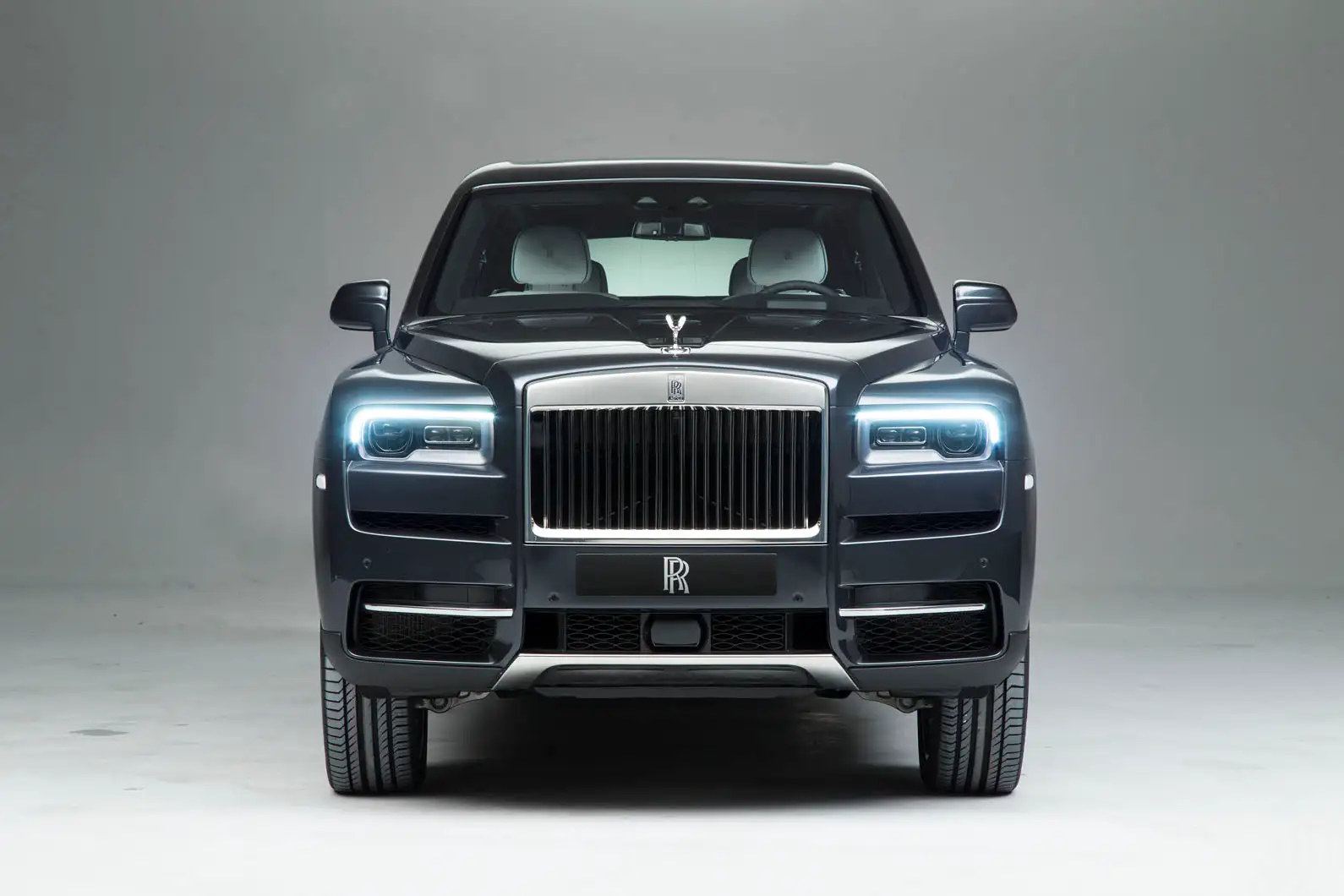 Due in full-scale production in the second half of this year for first sales just before Christmas, Cullinan is one of the principal reasons why Rolls-Royce has been investing heavily to re-configure its two key manufacturing facilities — the aluminium body “centre of excellence” at Unterhollerau near Munich, where there will soon be two body lines for all models, and at the flagship engine and final assembly plant at Goodwood, southern England, where every Rolls-Royce, regardless of body style, will in future be made on a single, high adaptable production line.
Due in full-scale production in the second half of this year for first sales just before Christmas, Cullinan is one of the principal reasons why Rolls-Royce has been investing heavily to re-configure its two key manufacturing facilities — the aluminium body “centre of excellence” at Unterhollerau near Munich, where there will soon be two body lines for all models, and at the flagship engine and final assembly plant at Goodwood, southern England, where every Rolls-Royce, regardless of body style, will in future be made on a single, high adaptable production line.
Cullinan is Rolls-Royce’s first SUV in 112 years — if you discount some extraordinary armoured saloon-based fighting vehicles of the World War One era and after — and it is also the company’s first-ever 4x4, a great leap forward especially if you consider that Cullinan’s system is a latest-tech, electronically controlled, highly configurable permanent all-wheel drive set-up. This is only the second new Rolls to use the all-new, highly flexible “Architecture of Luxury” aluminium spaceframe introduced recently with the latest Phantom 8 limousine and earmarked for every future Rolls-Royce including the second-generation Ghost saloon, next to arrive after Cullinan.
In its current form, the Ghost saloon uses BMW 7-series parts extensively because when it was announced back in 2006, Rolls bosses reckoned that was the best way to go. They have since concluded that designing a uniquely versatile aluminium space frame that can support all designs is a far better way of meet Rolls-Royce’s uncompromising requirements. In Cullinan, body rigidity is a particular feature: the new Phantom’sspaceframe is already 30% stiffer that its predecessor’s, and the Cullinan is stiffer still.
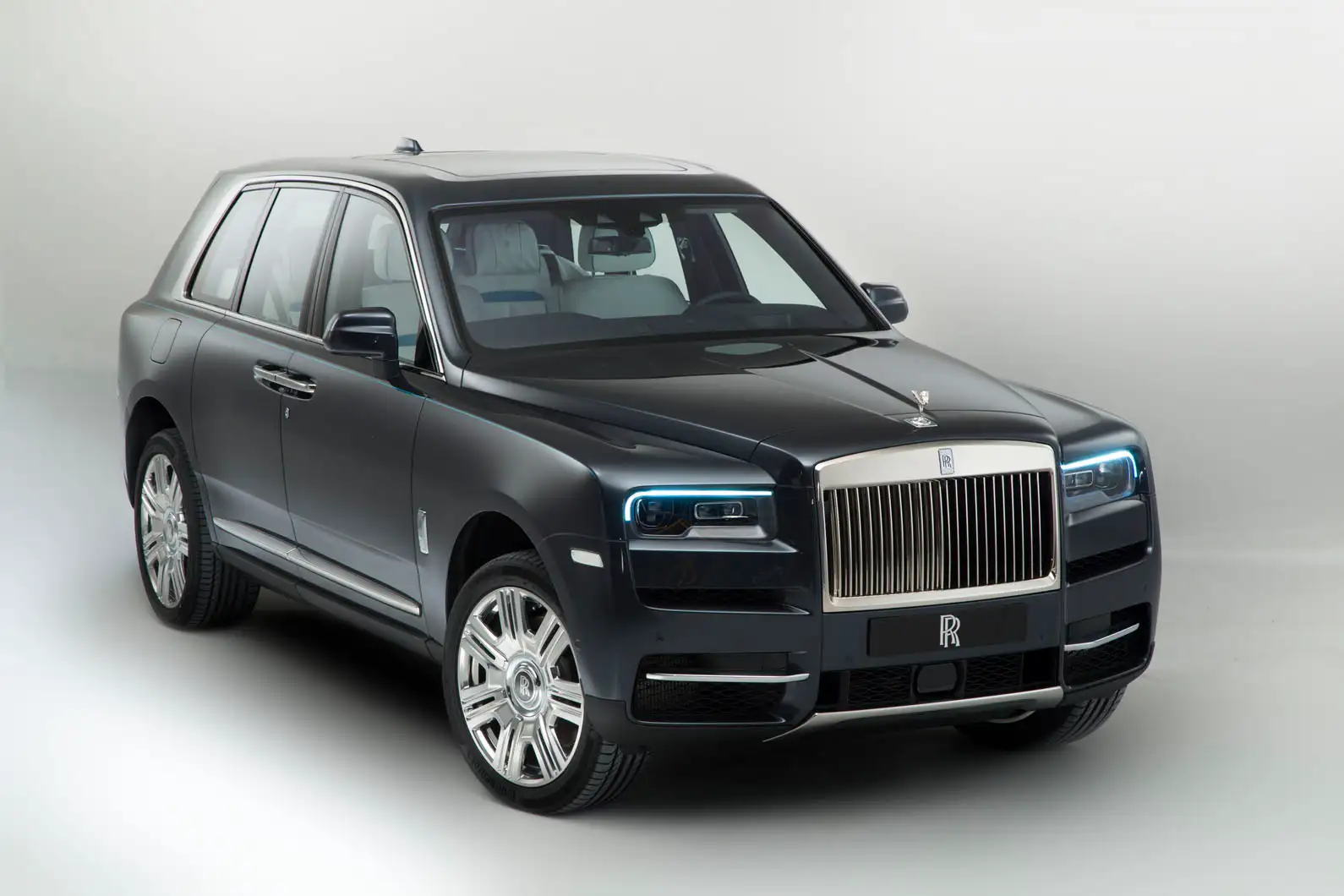 Though shorter by over 400 mm and higher (by nearly 200mm) than the new Phantom, the Cullinan is still a very big car against the standard length Bentley Bentayga and the extended wheelbase Range Rover. At 5341, it is a clear 200mm longer overall than Bentayga (and 90mm taller) plus a cool 350mm longer than the largest Range Rover. Its 3295mm wheelbase (300mm longer than a Bentayga) is a particularly telling feature, promising big interior space and adding credence to what Rolls-Royce’s claim of a “magic carpet ride”. The Cullinan’s quoted kerb weight is 2660kg, 100kg more than the Phantom’s official figure and 200kg more than the Bentley.
Though shorter by over 400 mm and higher (by nearly 200mm) than the new Phantom, the Cullinan is still a very big car against the standard length Bentley Bentayga and the extended wheelbase Range Rover. At 5341, it is a clear 200mm longer overall than Bentayga (and 90mm taller) plus a cool 350mm longer than the largest Range Rover. Its 3295mm wheelbase (300mm longer than a Bentayga) is a particularly telling feature, promising big interior space and adding credence to what Rolls-Royce’s claim of a “magic carpet ride”. The Cullinan’s quoted kerb weight is 2660kg, 100kg more than the Phantom’s official figure and 200kg more than the Bentley.
The Cullinan’s self-levelling air suspension, all-independent by double wishbones at the front and a multi-link layout at the rear — with active anti-roll bars acting on wheels — is a “thorough re-engineering” of the Phantom’s layout. Mostly, it gets air struts with more volume to provide relaxed ride rates over a longer travel plus reinforced and axles.
The 4x4 system’s drive runs forward to the front wheels from the rear of the gearbox, but there’s no high-low range split. Given the presence of a torque converter, the ZF automatic gearbox’s surfeit of ratios, and the engine’s impressive low-end torque, no low ratio set is needed. A so-called Everywhere button switches a dozen powertrain and suspension elements to meet any bigger challenges, and it’s possible to sharpen your Cullinan’s behaviour more by special settings for conditions like snow, rock-crawling and sand.
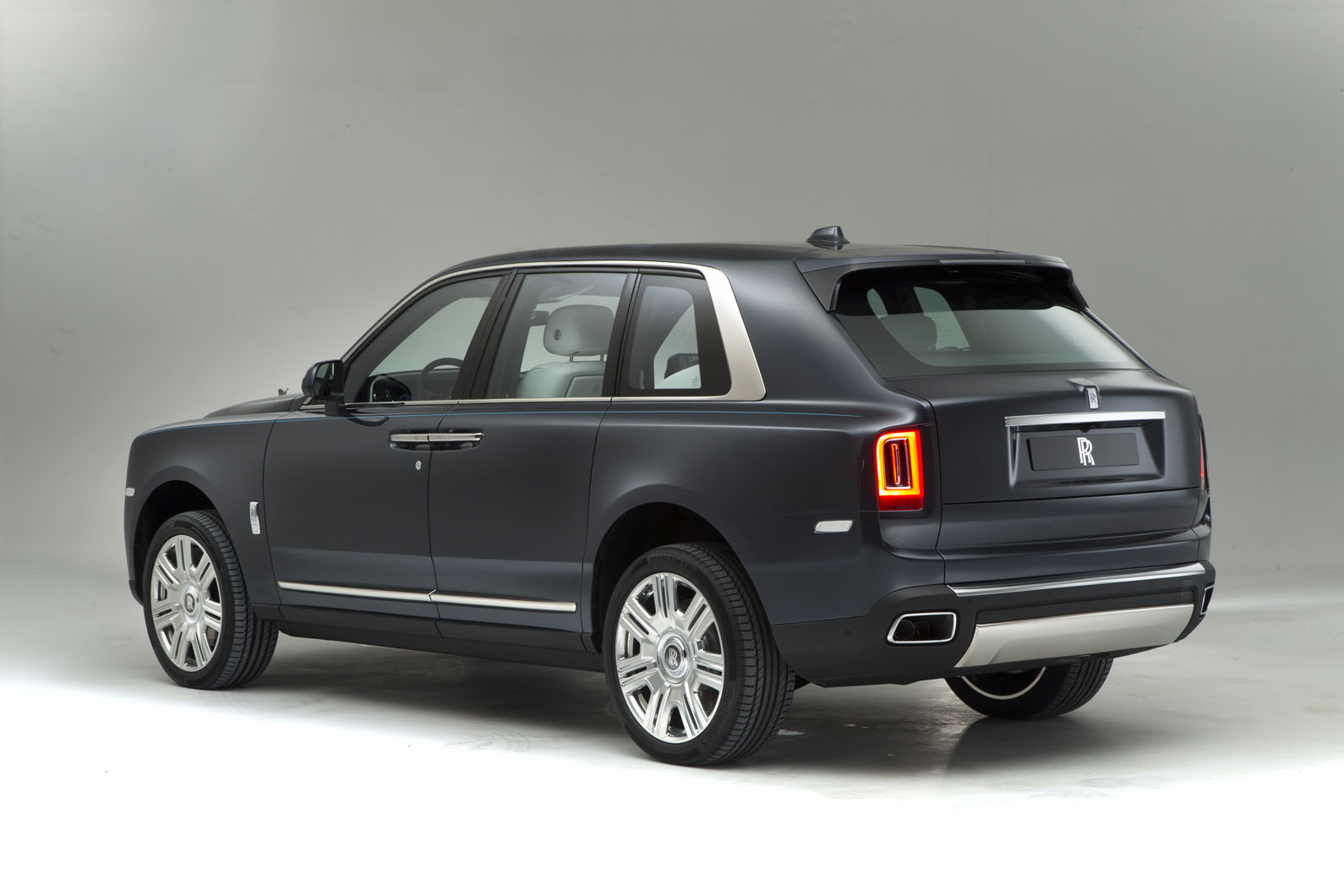
Barring the drive to the front wheels, the Cullinan’s V12 powertrain is very similar to that of the new Phantom. It has the now familiar 6.75-litre twin-turbo petrol V12, part-built at BMW’s specialist engine plant in Munich and installed in Goodwood.
Famous for smoothness and quietness, its 563hp is developed at a relaxed 5000rpm, while the peak torque of 627lb ft occurs at just 1600rpm, ideal both for off-roading and relaxed luxury motoring. Rolls-Royce, less flamboyant than Bentley, limit the Cullinan’s top speed to 155mph (a standard Bentayga can hit 187) and are also coy about quoting a 0-60mph time, though it hardly matters.
With a little more weight and less torque than Bentayga (0-60mph (0-100kph) 4.0sec), the Rolls can surely lay down a five-second run, an eye-watering performance for such a big car. The combined mpg (18.8mpg (7.99kpl)) and CO2 (341lb ft) won’t impress, though they’re unlikely to deter prospective owners, either.
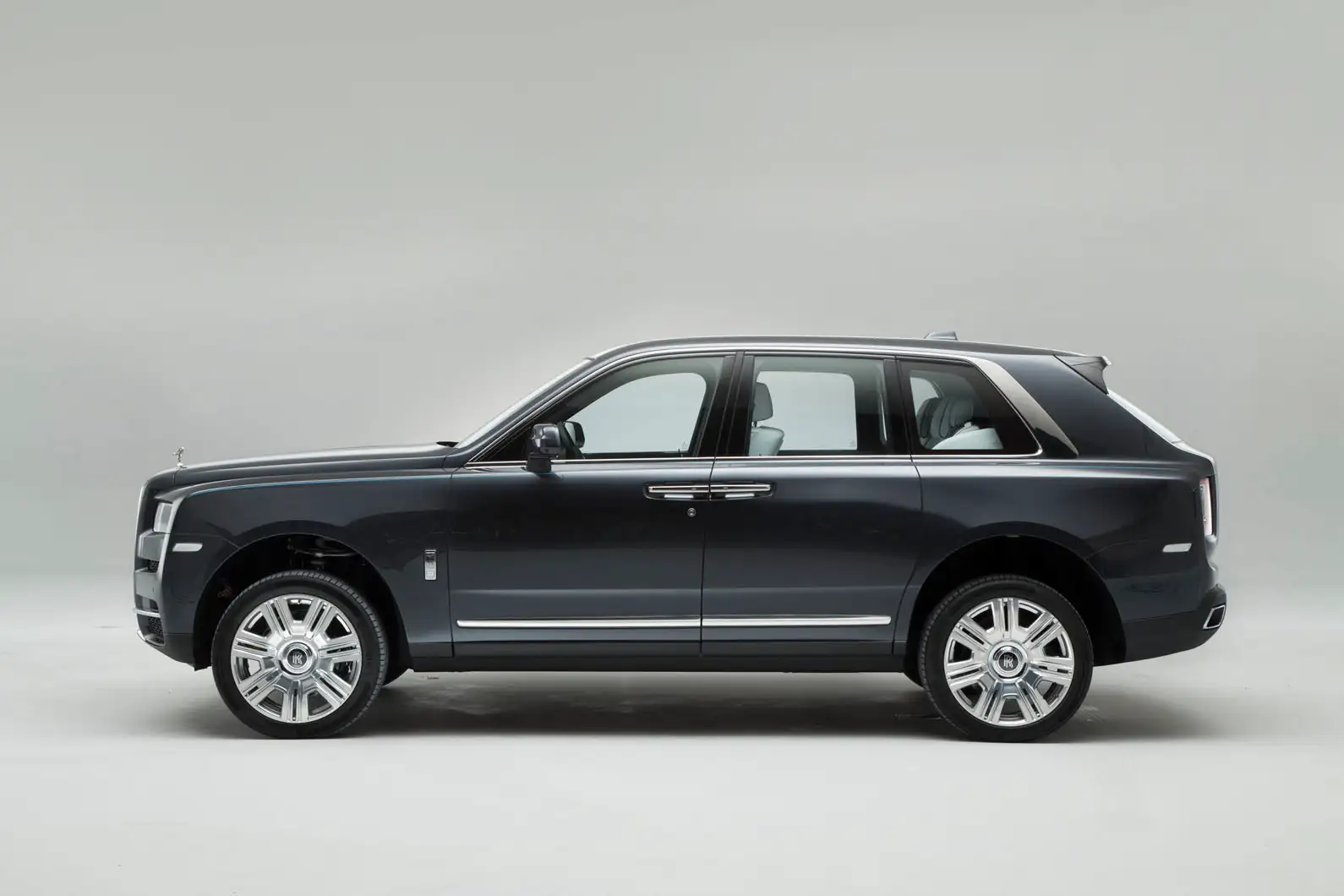 One reason for Cullinan’s impressive overall length is its use a “three-box” layout — in effect a classic, high-riding SUV shape with a short bustle-back that both improves the Cullinan’s profile and accommodates luggage more easily. There’s a split tailgate that opens both upwards and downwards to provide both shelter on rainy days and a low loading lip.
One reason for Cullinan’s impressive overall length is its use a “three-box” layout — in effect a classic, high-riding SUV shape with a short bustle-back that both improves the Cullinan’s profile and accommodates luggage more easily. There’s a split tailgate that opens both upwards and downwards to provide both shelter on rainy days and a low loading lip.
The Cullinan’s styling is upright and quite formal, though Rolls is at pains to emphasise that the car works just as well when painted in brighter, “everyday” colours and with informal interior hardware and texture choices as it does in more formal finishes. “With other Rolls-Royces,” says designer Giles Taylor, “the occupants’ involvement with the car ends with the arrival. Cullinan takes them off-road or to the beach and waits, which makes it a more practical, less formal kind of car.”
Cullinan’s height, its big glass-to-metal ratio its fairly short rear overhang make it look deceptively compact. The designers talk about a “toughness of expression” to advertise the model’s more practical qualities, embodied by the fact that Cullinan’s wading depth is 540mm.
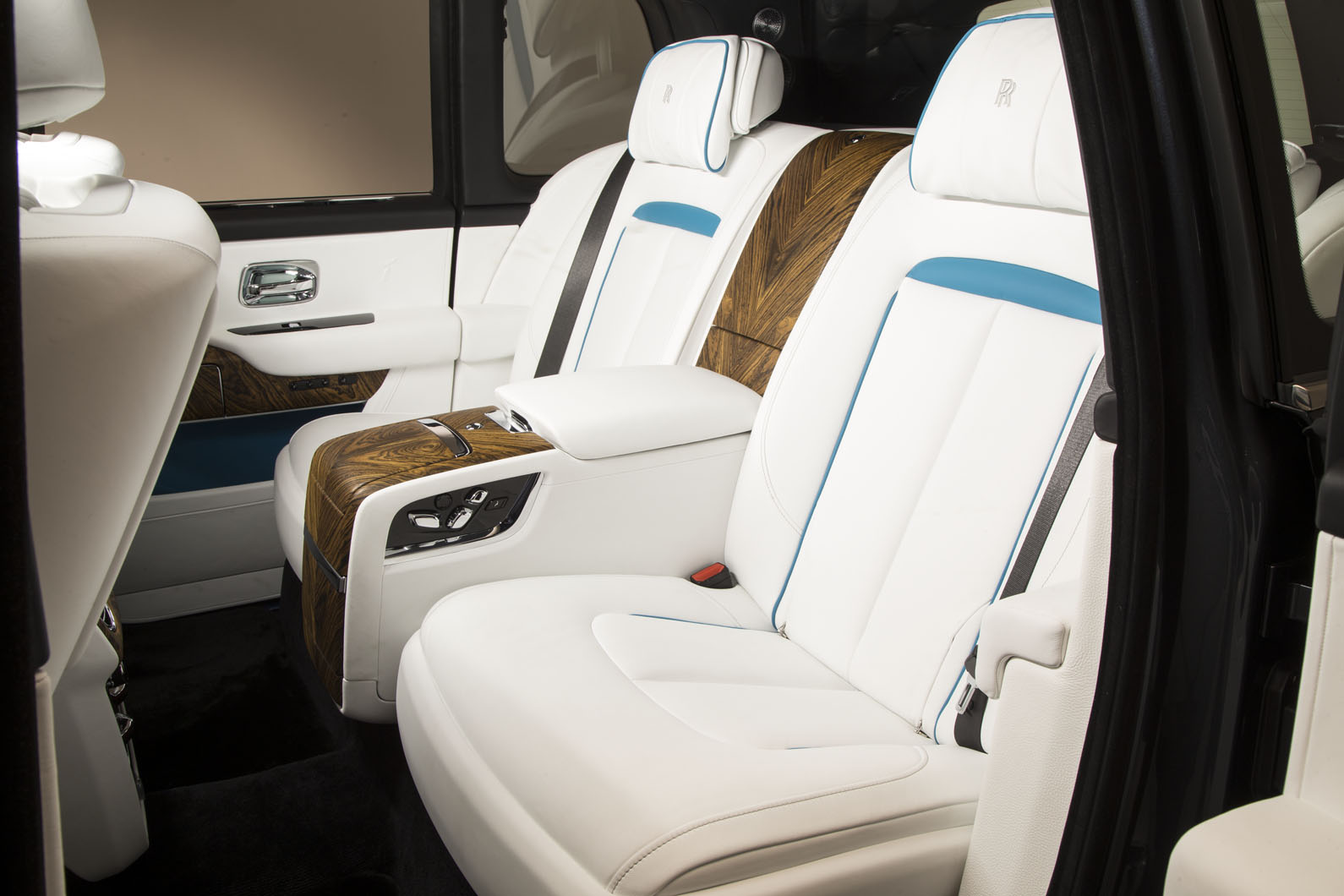 For all its practicality, the Cullinan still exudes class-topping quality. The high, prow-like bonnet rides above a traditional, hand-polished stainless steel grille. The lights and intakes are set more deeply into the body than on a saloon, and whole car consists at the front of a system of strong vertical and horizontal lines that the designers reckon imply strength and power) but the whole thing is given a more sporty mein by the fact that the roofline drops noticeably behind the B-pillar.
For all its practicality, the Cullinan still exudes class-topping quality. The high, prow-like bonnet rides above a traditional, hand-polished stainless steel grille. The lights and intakes are set more deeply into the body than on a saloon, and whole car consists at the front of a system of strong vertical and horizontal lines that the designers reckon imply strength and power) but the whole thing is given a more sporty mein by the fact that the roofline drops noticeably behind the B-pillar.
Rolls call Cullinan a three-box SUV, with a nod to the protruding rear styling of so-called D-back Rolls-Royce saloons in the 1930s. Giles Taylor praises the role of the flexible architecture in his overall Cullinan design. “It let me put wheels and roof in exactly the right places…”
Cullinan’s interior is the usual paragon of Rolls quality and style, with a hint of natural conservatism (unless you configure yours flamboyantly) and an innate simplicity about the controls and instruments.
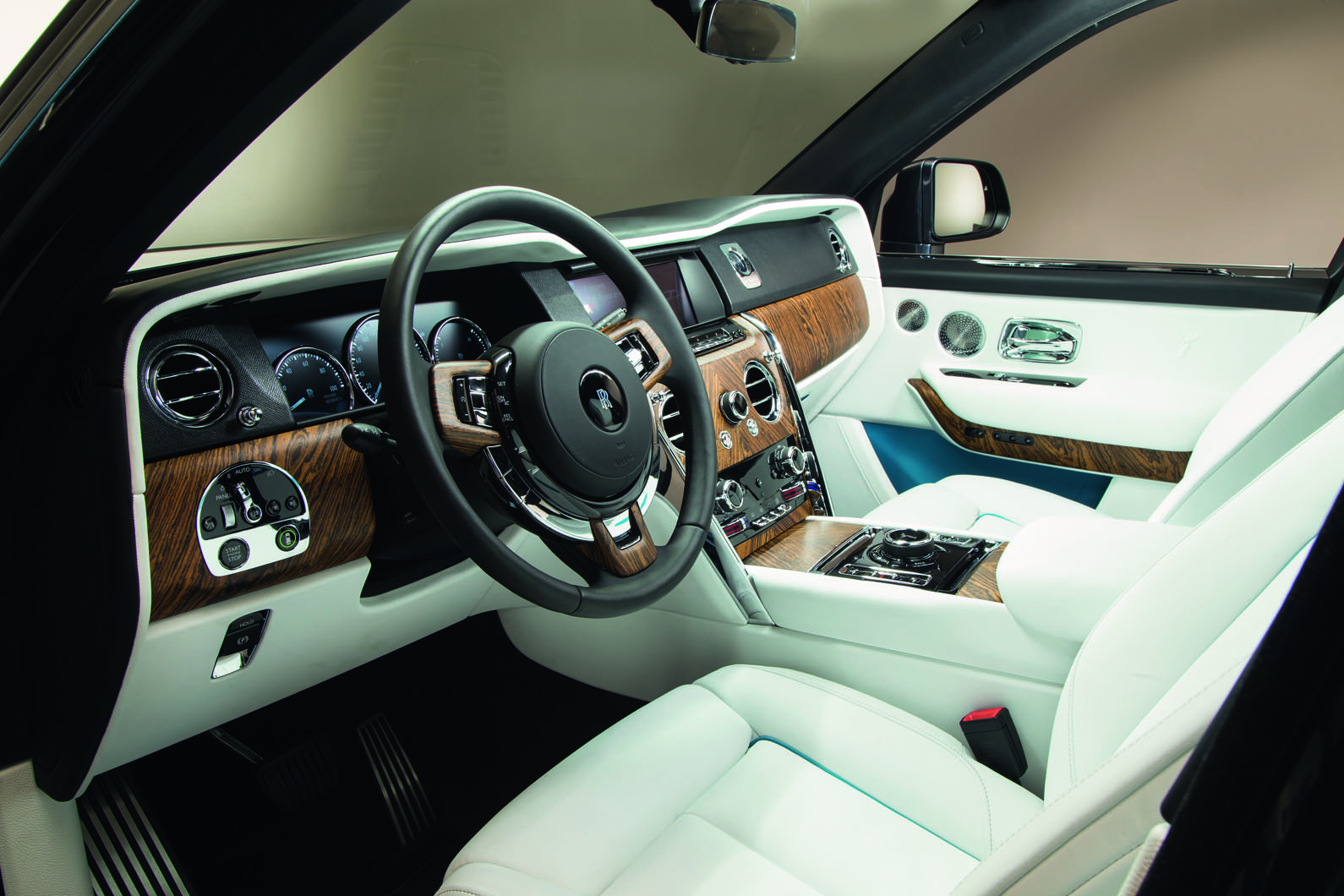 Rolls have long protected their owners from the sensory overload that can be caused by banks of dials, screens, switches and levers. The fascia, its upper half trimmed with durable and impressive new “box grain” leather (you might find it on a Leica camera) has another material below, perhaps wood.
Rolls have long protected their owners from the sensory overload that can be caused by banks of dials, screens, switches and levers. The fascia, its upper half trimmed with durable and impressive new “box grain” leather (you might find it on a Leica camera) has another material below, perhaps wood.
As you unlock your Cullinan with the key or touch its door handle, the body lowers 40mm for easy access. It rises again when you thumb the starter and the rear coach doors. Inside, there’s a flat floor, a legacy of the SUV format and the new architecture.
Despite talk of simplicity Cullinan can bristle with an impressive array of equipment that includes four- camera surround visibility, night vision, head-up display, a wifi hotspot, an alertness assistant and more. The tailgate is powered, of course, and can open to reveal an optional “recreation module”, a superbly made container filled with tools for whatever activity you favour, from croquet to drone racing. The demo car had a Viewing Suite, two comfortable fold-out chairs and a little table, perfect for taking outdoor cocktails or watching a point-to-point. Rolls-Royce is determined that a Cullinan will play its full part in its new owner’s lifestyle.
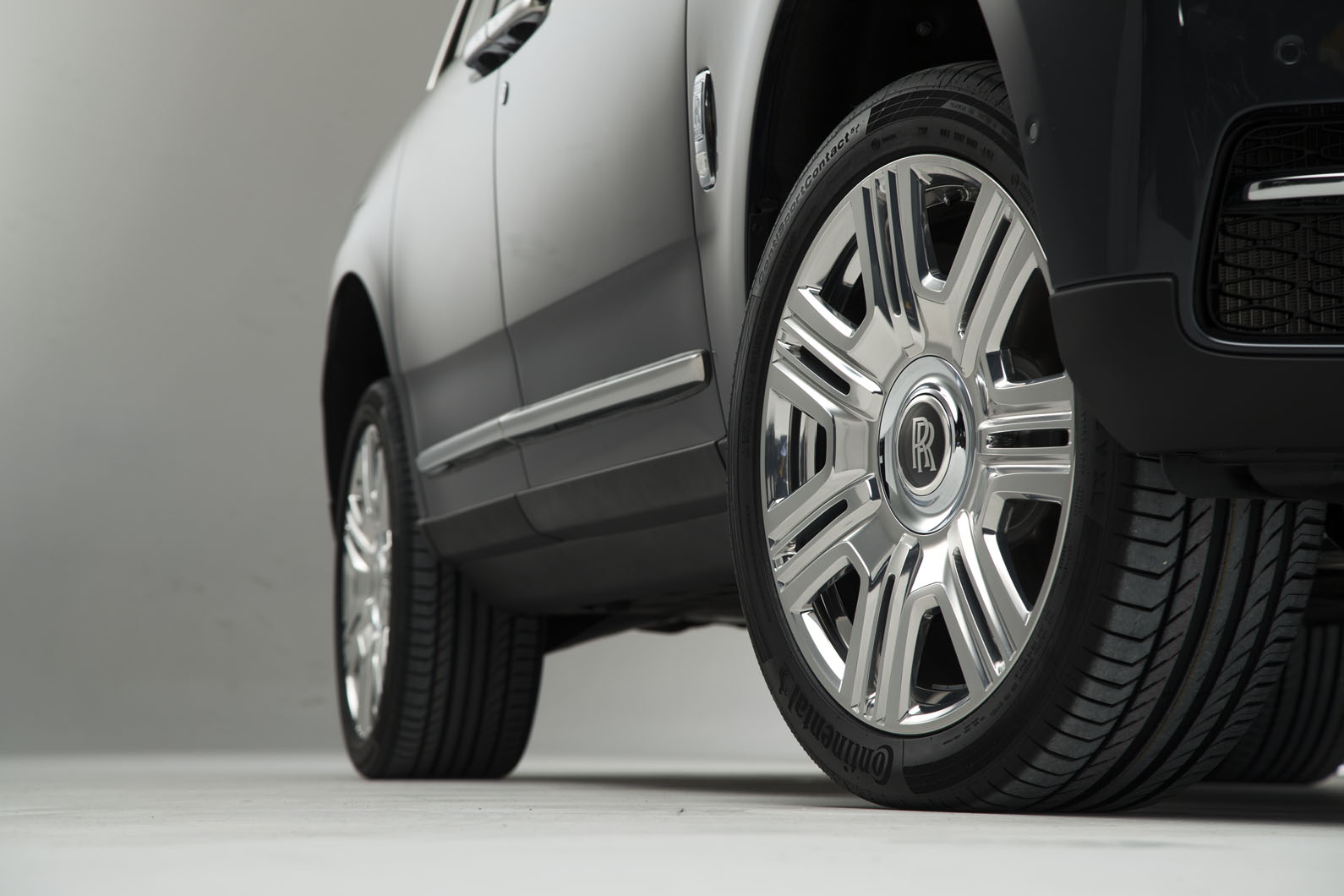 Rolls-Royce is expecting big things of the Cullinan.
Rolls-Royce is expecting big things of the Cullinan.
As well as anticipating new interest in markets such as India and Russia that especially suit Cullinan’s “Effortless, Everywhere” message, the company expects take-up from younger, more active, outdoor-loving buyers.
As ever, Rolls people won’t talk specifics on volume but agree Cullinan is likely to become the best-selling Rolls on offer. Annual volume, currently 4000 units, could easily swell to 6000, and given that most buyers spend big on custom equipment these days, it could lift Rolls onto a new plane of profitability. For all the Cullinan’s comparative practicality, the company insists its unique qualities should not be lost. “It’s a very special car,” says Giles Taylor, “literally the most versatile pinnacle we can imagine.”
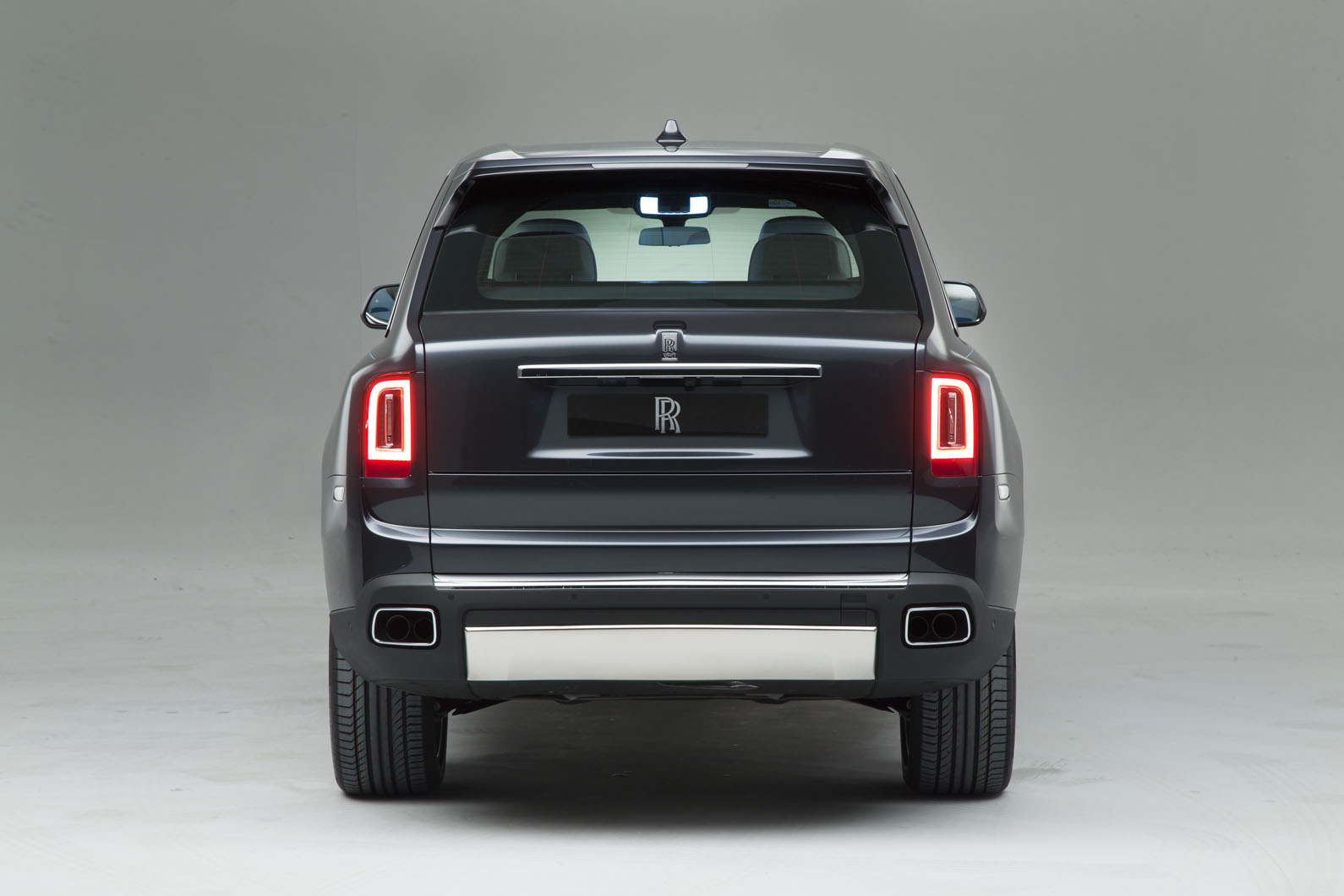 Munich plant Rolls-Royce
Munich plant Rolls-Royce
You won’t find tourist buses in Unterhollerau.
Not unless the inmates are touring automotive aluminium centres of excellence, which you’ve got to say is unlikely. But Unterhollerau is a vital and highly effective outpost of BMW — or more accurately Rolls-Royce.
It may not be beautiful, but in these cream industrial buildings every new Rolls-Royce will soon start its life — because every car will use the same chassis frame, trimmed to different widths, angles and dimensions according to model.
Head of Rolls production concept Neil Crichton, Cullinan product manager Phil Harnett and two hugely experienced, grey-coated manufacturing gurus called Thomas and Manfred. I’ve been here before, but this time I’m going to learn what flexible architecture really means. Neil, a happy Brit who has learned French, German and Chinese in the course in a roving Rolls-BMW global career, explains how and where a space frame can be made to fit SUVs, convertibles and saloons big and small.
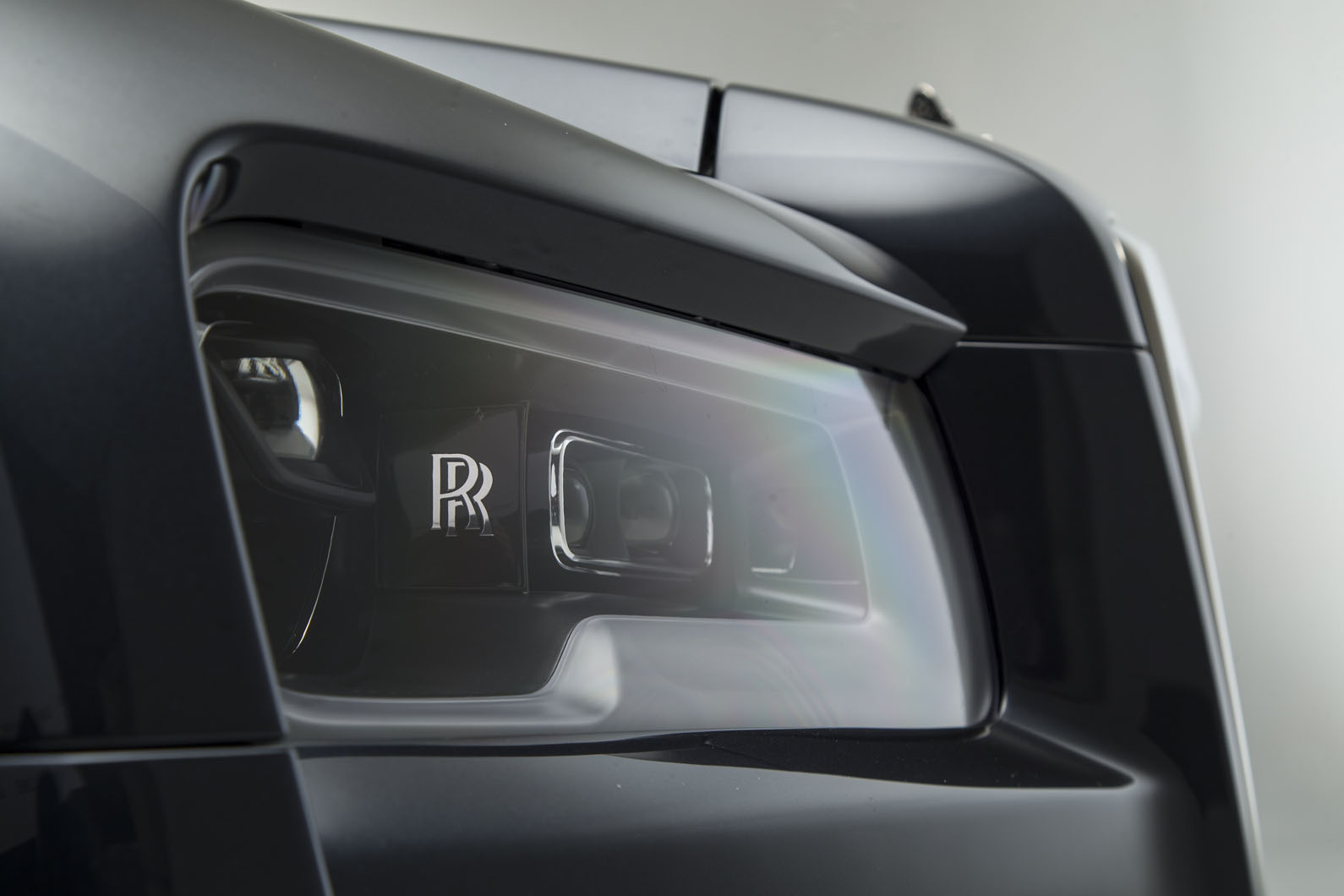
Twenty years ago, Rolls people thought the best thing for a 4000-off small manufacturer was to have the run of BMW’s platforms and running gear to build your cars. But the experience of the current Ghost (which they now half-admit could have been improved by a space frame) showed differently. So around 2011, a plan was hatched to put all Royces on the same unique architecture and to adapt it to their special needs.
Crichton projects some fascinating diagrams on the wall that explain the principle. Six key areas govern how cars vary — in dash-to- axle measurement, wheelbase, rear overhang, cowl position and height, seat height and ride height. All you’ve got to do is to create a load-bearing structure that can be varied widely in all these places and ways and you’ve done the job. This, in essence, is what Rolls have achieved — at maximum rigidity, in weight-saving aluminium. What is more, they’ve done such deep thinking about the cars they want to offer over the next decade and more that they’re able to let contracts to suppliers for key chassis pieces that extend from here to the later 2020s. It looks like a factory but it’s a tour-de-force.
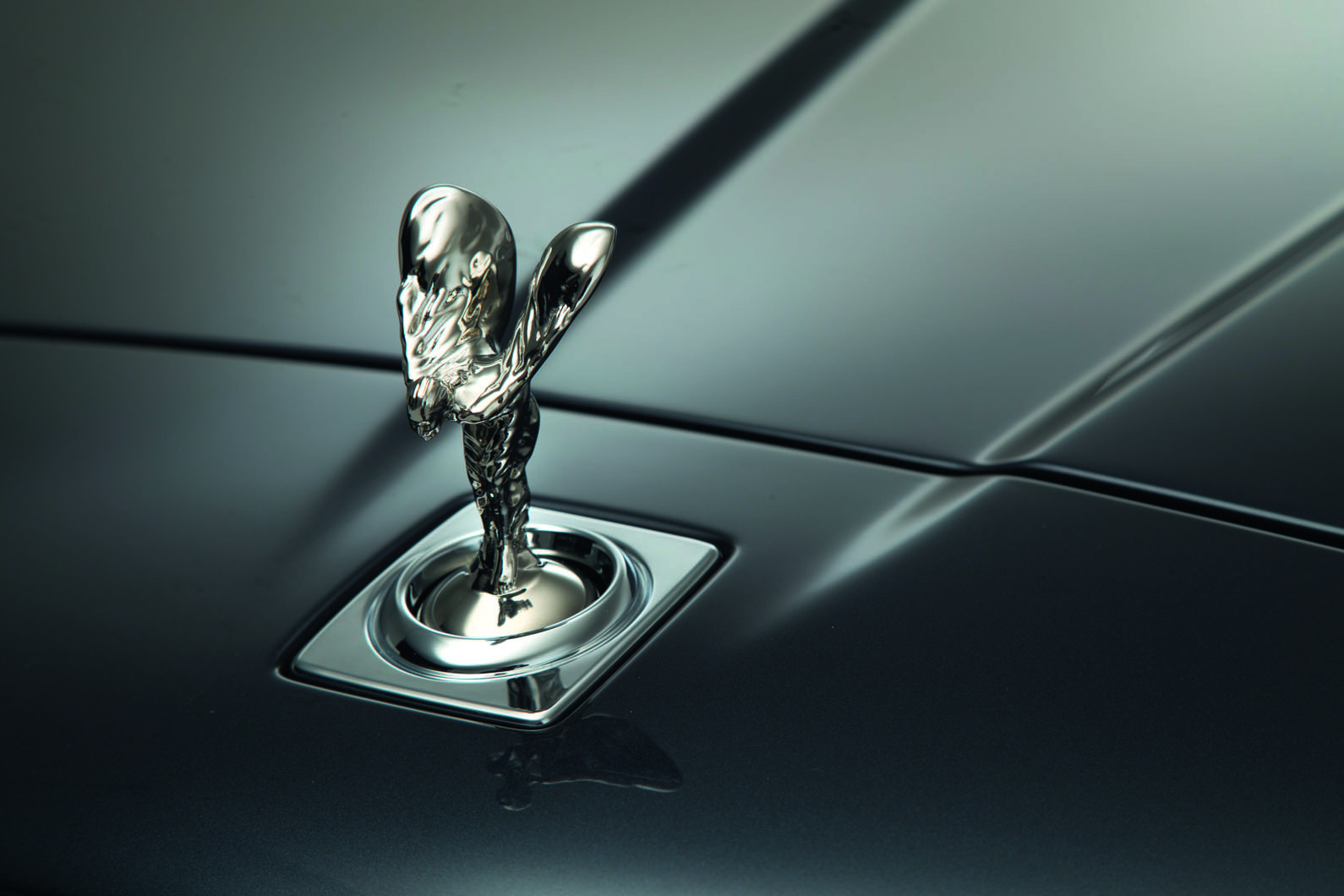 As we get to know Thomas and Manfred, our manufacturing experts gradually turn from a dour pair into a couple of comedians, taking us on a fascinating tour to see how a disparate collection of components gathered on a trolley (known as a car-set) are formed into a coated, car-like doors-on structure. It is achieved largely by robot-conducted rivetting and bonding (each body contains 150 metres of glue) and in many places the required accuracy standard is plus or minus 0.5mm. Such standards, as Thomas and Manfred proudly explain, make a Rolls-Royce. As we leave, even without the wheels on, I want one.
As we get to know Thomas and Manfred, our manufacturing experts gradually turn from a dour pair into a couple of comedians, taking us on a fascinating tour to see how a disparate collection of components gathered on a trolley (known as a car-set) are formed into a coated, car-like doors-on structure. It is achieved largely by robot-conducted rivetting and bonding (each body contains 150 metres of glue) and in many places the required accuracy standard is plus or minus 0.5mm. Such standards, as Thomas and Manfred proudly explain, make a Rolls-Royce. As we leave, even without the wheels on, I want one.
Also read:
RELATED ARTICLES
Skoda begins sale of made-in-India CKD Kushaq in Vietnam
Before production started, pre-series Kushaq vehicles covered over 330,000 kilometres on a variety of Vietnamese roads a...
Six Japanese companies join forces to expand use of recycled materials in new vehicles
Denso, Toray Industries, Nomura Research Institute, Honda Motor, Matec Inc and Rever Corporation have set up the BlueReb...
BYD selects Voestalpine as steel supplier for its Hungarian plant
The announcement of the Austrian steelmaker as a supplier demonstrates BYD’s strategic plan to source from high-quality,...





 10 May 2018
10 May 2018
 20786 Views
20786 Views












































 Autocar Professional Bureau
Autocar Professional Bureau




